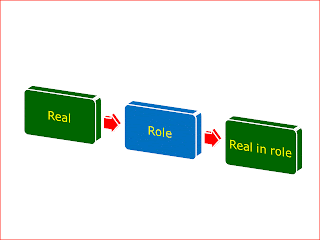3 tips for communicating with 'architects, builders & craftsmen'

* Architects.
Architects are often decision makers and see the big picture. They like headlines. So quickly explain the results you aim to achieve - plus the benefits. They often go: ‘a, b … then leap to … z’. Visionary by nature, they tend not to get into details, though they may ask the odd ‘curve ball’ question to check if you have done your homework. Providing you have a ‘values-fit’ with them, they will want you to explain the broad principles you will follow to achieve the vision. Architects sometimes have a short attention span - so double-check they are still on-board - otherwise they may get bored and cause difficulties. Once onside, however, you will find they are great advocates. Try completing the following sentence.
The things I can do to communicate with ‘architects’ are:
*
* Builders.
Builders pursue a more ‘logical’ thought process of going ‘a, b, c, d, e …’ until they get to ‘z’. For example, they may be project managers who concentrate on the implementation plans. They focus on the processes to be followed to get the job done. So you must have your facts ready to answer their questions. If possible, meet with the key ‘architects’ and ‘builders’ before the presentation to agree on the key principles for making things happen. You will need the builders onside if you want the ‘building’ - the project or other piece of work - to be finished. Try completing the following sentence.
The things I can do to communicate with ‘builders’ are:
*
* Craftsmen.
Craftsmen are specialists who are often individual knowledge workers. Knowing every detail in their field, they are likely to discuss the intricacies of engraving each ‘brick’. Sometime they can throw presentations off-track by interrupting in mid-sentence, saying: “Do you realize the problems involved in point ‘c’?” Craftsmen care deeply about their work - so you need them onside. One approach is to provide them with a detailed compendium that gives answers to their key questions. You can refer to how their concerns are covered in the back-up material - then continue with the flow of your presentation. Try completing the following sentence.
The things I can do to communicate with ‘craftsmen’ are:
*
Presentations obviously work best when you prepare properly - so try to lay the groundwork. Before the session, start by getting the architects onside and, if possible, get one-to-one meetings with the builders and craftsmen. During these meetings you will, of course, need to present the information in different ways for people with different learning styles. Whenever possible, get everybody on-board beforehand. This will give you the greatest chance of success.
Labels: communication, leadership, strengths




















